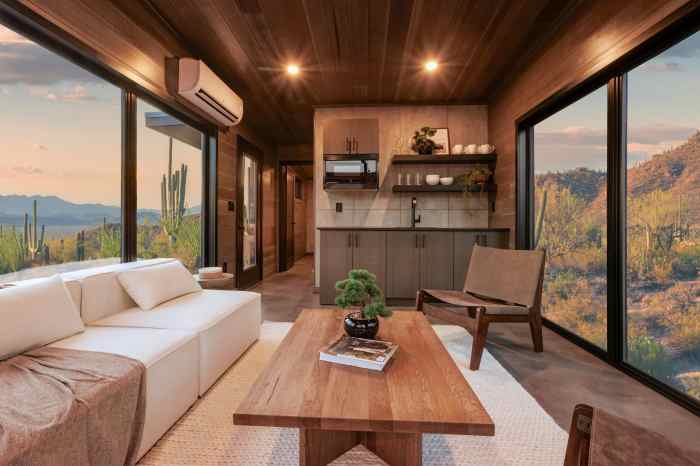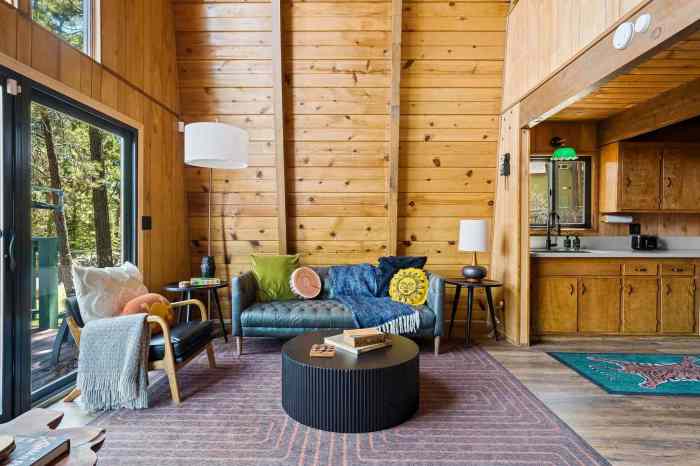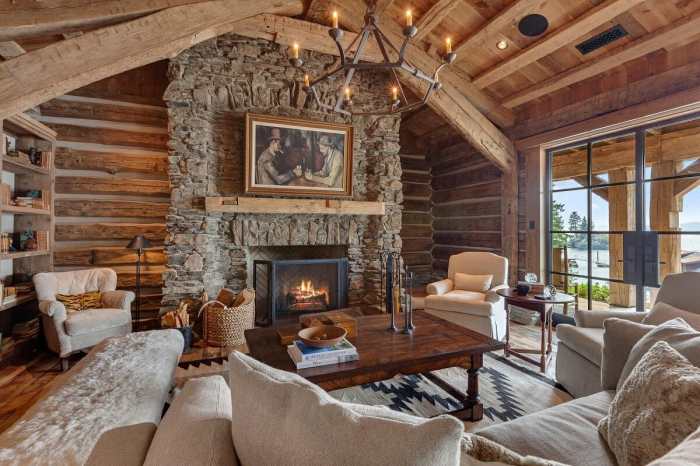Cabin interior sets the stage for this enthralling narrative, offering readers a glimpse into a story that is rich in detail and brimming with originality. From the key elements that define a cabin's interior to the evolution of styles over time, this exploration promises to be both informative and engaging.
Overview of Cabin Interior

When it comes to cabin interiors, there are several key elements that contribute to the overall design and functionality. These elements include furniture, lighting, color scheme, storage solutions, and overall layout.
The importance of cabin interior design varies depending on the type of cabin. For example, in an airplane cabin, the design needs to prioritize space efficiency, comfort, and safety. On a cruise ship, the interior design plays a crucial role in providing a luxurious and relaxing experience for passengers.
In a log cabin, the interior design often focuses on creating a cozy and rustic ambiance.
Evolution of Cabin Interiors
Over time, cabin interiors have evolved significantly in terms of style and functionality. In the past, cabins were often designed with a more traditional and practical approach, focusing on durability and basic comfort. However, modern cabin interiors now incorporate contemporary designs, innovative technology, and sustainable materials to enhance the overall experience for occupants.
Materials Used in Cabin Interiors

When it comes to cabin interiors, a variety of materials are used to create a comfortable and visually appealing space. These materials play a crucial role in determining the overall look, feel, and durability of the cabin.
Common Materials Used
- Wood: Wood is a popular choice for cabin interiors due to its natural and warm appearance. It can range from rustic to polished depending on the type of wood used.
- Metal: Metal elements such as stainless steel or aluminum are often incorporated for a sleek and modern look in cabin interiors.
- Fabric: Fabrics like wool, cotton, or leather are commonly used for upholstery, curtains, and cushions to add comfort and style to the cabin.
- Leather: Leather is a luxurious material that can add a touch of sophistication to cabin interiors, often used for seating or decorative accents.
Benefits and Drawbacks
- Wood:Benefits include a timeless look and durability, but drawbacks may include susceptibility to moisture and potential maintenance requirements.
- Metal:Benefits include a modern aesthetic and durability, but drawbacks may include susceptibility to scratches and dents.
- Fabric:Benefits include softness and versatility, but drawbacks may include staining and wear over time.
- Leather:Benefits include a luxurious feel and durability, but drawbacks may include high maintenance and cost.
Innovative Materials in Modern Design
In modern cabin interior design, innovative materials are being used to enhance aesthetics and functionality. Examples include:
- Recycled materials like reclaimed wood or metal for a sustainable approach.
- Acrylics and fiberglass for sleek and lightweight design elements.
- Composite materials that combine the best properties of different materials for improved performance.
Color Schemes and Lighting

Color schemes and lighting play a crucial role in shaping the ambiance and overall aesthetic of a cabin interior. The right combination can create a cozy, inviting atmosphere that enhances the experience of being in the space.
Significance of Color Schemes
Color schemes are essential in setting the tone of a cabin interior. Warm colors like earth tones and soft neutrals can create a sense of comfort and relaxation, perfect for cabins designed for leisure and downtime. On the other hand, cool tones like blues and greens can promote focus and productivity, ideal for cabins intended for work or study.
Role of Lighting
Lighting is a key element in enhancing the look and feel of a cabin interior. Natural light can brighten up the space and make it feel more spacious, while artificial lighting fixtures like pendant lights or wall sconces can add warmth and character.
Dimmable lights offer flexibility in adjusting the ambiance according to different activities or moods.
Tips for Choosing the Right Color Schemes and Lighting
- Consider the purpose of the cabin: Determine whether the cabin is meant for relaxation, work, or entertainment, and choose color schemes and lighting accordingly.
- Balance warm and cool tones: Mix warm and cool colors to create a harmonious and inviting environment.
- Layer lighting: Combine ambient, task, and accent lighting to provide adequate illumination for different tasks and to highlight key features of the interior.
- Experiment with textures: Incorporate different textures in furniture, fabrics, and decor to add depth and visual interest to the space.
- Test before committing: Always test paint colors and lighting fixtures in the actual cabin space to see how they interact with the existing elements and natural light.
Furniture and Layout
When it comes to cabin interiors, furniture selection plays a crucial role in optimizing space and ensuring comfort for passengers. The layout of furniture also greatly impacts the functionality and overall aesthetics of the cabin.
Importance of Furniture Selection
Choosing the right furniture for a cabin interior is essential for maximizing space utilization and providing a comfortable environment for passengers. The selection of furniture should be based on the cabin's size, purpose, and the needs of the passengers.
- Furniture should be lightweight yet durable to withstand the rigors of travel.
- Multipurpose furniture such as foldable tables or modular seating can help save space and increase functionality.
- Ergonomic design should be prioritized to ensure passenger comfort during long journeys.
Creating an Efficient Layout
An efficient layout in a cabin interior is key to maximizing functionality and ensuring a seamless travel experience for passengers.
- Consider the flow of movement within the cabin and place furniture strategically to allow for easy access to amenities.
- Utilize vertical space by incorporating overhead storage compartments or bunk beds to optimize space.
- Keep the layout flexible to accommodate different seating configurations based on the number of passengers.
Trends in Furniture Design and Layout
Cabin furniture design and layout are constantly evolving to cater to different preferences and needs of passengers.
- Minimalist design with clean lines and neutral colors is a popular trend for a modern and sleek cabin interior.
- Customizable furniture options allow passengers to personalize their space and enhance comfort during the journey.
- Integration of technology such as USB charging ports and touchscreen displays in furniture adds convenience and functionality to the cabin.
Final Thoughts
As we conclude our discussion on cabin interiors, it becomes evident that these spaces are not merely functional but also a canvas for artistic expression. From materials to color schemes, furniture, and layout, every aspect plays a crucial role in creating a harmonious and inviting environment.
The journey through cabin interior design is one filled with endless possibilities and room for creativity, making it a truly captivating subject to delve into.
FAQ Section
What are some key elements of a cabin interior?
The key elements of a cabin interior typically include furniture, color schemes, lighting, materials like wood or fabric, and layout design.
How has cabin interior design evolved over time?
Cabin interior design has evolved to incorporate modern aesthetics and functionality, moving away from traditional styles to more contemporary and innovative approaches.
Why is lighting important in cabin interiors?
Lighting plays a crucial role in enhancing the overall ambiance and mood of a cabin interior, creating a warm and inviting atmosphere.
